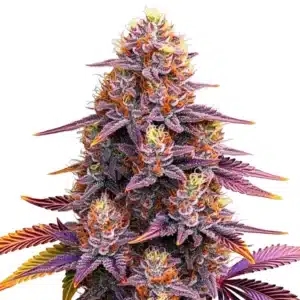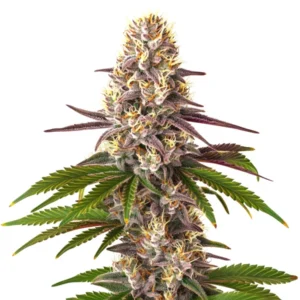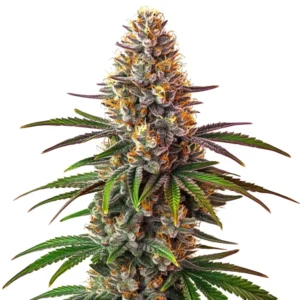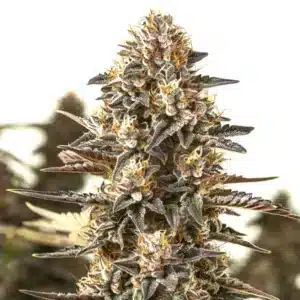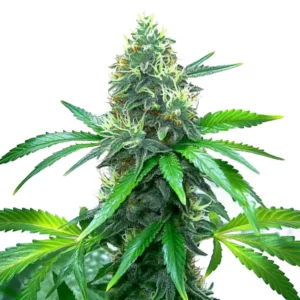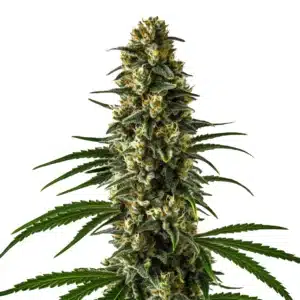
How to Not Eat While High: Mastering Control Over Munchies
When it comes to enjoying cannabis, many people face the challenge of dealing with the munchies. These intense cravings can lead to overeating, which may sabotage your health goals. If you’re looking for effective ways to manage or even eliminate these cravings, you’ve come to the right place. Let’s explore How to Not Eat While High and take control of your cannabis experience.
Effective Strategies to Avoid Munchies While High
Dealing with munchies can feel overwhelming, but realizing why they happen can give you the upper hand. Let’s dive into strategies that work to help you avoid unnecessary snacking while high.
Recommended Strains
Knowing the Science Behind Munchies and Hunger
The munchies aren’t just in your head there’s real science behind why you feel so hungry after consuming cannabis. THC, the active compound in cannabis, interacts with the brain’s endocannabinoid system, which plays a role in regulating appetite. THC binds to receptors in the brain that trigger the release of hormones like ghrelin, which signals hunger. Even if you’ve recently eaten, these signals can make your brain think you’re starving, leading to intense cravings.
Knowing how THC influences your appetite is key to learning how to not eat while high. Recognizing that these cravings are chemically induced rather than a genuine need for food can empower you to resist the urge to snack. The next time you feel those munchies creeping in, remind yourself that it’s just your brain playing tricks on you.
Preparing Before You Get High: Tips to Curb Cravings
One of the best ways to avoid the munchies is to prepare yourself before you get high. By taking a few simple steps ahead of time, you can significantly reduce your chances of giving in to cravings.
Start by eating a well-balanced meal before consuming cannabis. A meal rich in protein, fiber, and healthy fats will keep you full and satisfied for longer, reducing the likelihood of feeling hungry later on. Foods high in fiber, like vegetables and whole grains, are particularly effective because they slow digestion and keep your blood sugar levels stable.
Another helpful strategy is to keep tempting snacks out of sight. If you don’t have easy access to junk food, you’re less likely to eat it. Instead, stock your kitchen with healthy options that are low in calories but still satisfying, like fruits, nuts, or air-popped popcorn. This way, if you do feel the need to munch, you’ll have healthier choices at your fingertips.
Mindful Distractions to Keep Your Hands Busy
Keeping your mind and hands occupied can be a powerful tool in fighting the urge to snack while high. Engaging in activities that distract you from food can make it easier to resist cravings and enjoy your high without overeating.
Consider taking up hobbies or activities that require focus and manual dexterity. Puzzles, video games, knitting, or drawing are great examples of tasks that keep your hands busy and your mind engaged. These activities not only distract you from the munchies but also provide a creative and productive outlet while you’re high.
Another effective tactic is to brush your teeth or chew gum. The minty flavor can signal to your brain that mealtime is over, reducing the desire to eat. Plus, no one wants to spoil that clean, fresh feeling with unnecessary snacking.
Promos & Deals
Healthy Alternatives to Eating While High
If you find it difficult to completely avoid eating while high, choosing healthier options can make a significant difference. Let’s explore some alternatives that satisfy your cravings without derailing your dietary goals.

Low-Calorie Snacks That Satisfy Without Overeating
When the munchies hit, reaching for low-calorie snacks can help you manage your cravings without the guilt. The key is to choose foods that are both satisfying and lower in calories, so you can enjoy them without worrying about overindulging.
Fresh fruits and vegetables are excellent choices. Carrot sticks, cucumber slices, or apple wedges are not only low in calories but also high in fiber, which helps you feel full. You can pair them with a small amount of hummus or yogurt dip for added flavor and satisfaction.
Air-popped popcorn is another great option, and for a fun twist, some enthusiasts might even mix it up with Popcorn Weed. It’s low in calories and high in fiber, making it a perfect munchie snack. Just be sure to avoid adding too much butter or salt, which can quickly turn a healthy snack into a less healthy one.
Hydration: How Water Can Help You Resist the Urge
Staying hydrated is a simple yet effective way to combat the munchies. Sometimes, what we perceive as hunger is actually thirst. By drinking water before and during your cannabis session, you can help stave off unnecessary cravings.
Water not only keeps you hydrated but also helps you feel full, reducing the likelihood of reaching for snacks. If plain water feels too boring, try adding a slice of lemon or cucumber for a refreshing twist. Herbal teas can also be a great way to keep your hands and mouth busy without consuming extra calories.
Another tip is to drink water or tea in between bites if you do decide to snack. This can help slow down your eating and give your brain time to register that you’re full, reducing the chances of overeating.
Engaging in Activities That Take Your Mind Off Food
Sometimes, the best way to avoid eating while high is to simply distract yourself. Engaging in activities that captivate your attention can help take your mind off food and focus on something more enjoyable.
Creative activities like painting, writing, or playing a musical instrument can be incredibly satisfying while you’re high. These hobbies not only keep you entertained but also allow you to express yourself, making the experience more fulfilling.
Physical activities like going for a walk or practicing yoga can also be effective. Exercise releases endorphins, which can help curb cravings and leave you feeling more content. Plus, staying active can burn off some of the calories you might otherwise consume if you gave in to the munchies.
Psychological Tricks to Control Munchies
Sometimes, overcoming the munchies requires more than just physical strategies. Psychological techniques can play a significant role in helping you manage cravings and maintain control over your eating habits while high. Here are some mental tricks to help you stay on track.

How to Practice Mindful Eating to Avoid Overindulging
Mindful eating is a powerful tool in managing the munchies. It involves being fully present and aware during your eating experience, which can help you make better choices and avoid overeating. When you practice mindful eating, you pay close attention to the taste, texture, and smell of your food, as well as your body’s hunger and fullness signals.
Start by slowing down and savoring each bite. Chew your food thoroughly and take the time to really enjoy the flavors. This not only enhances your eating experience but also gives your brain time to recognize when you’re full. By eating slowly and mindfully, you’re more likely to eat less and feel more satisfied.
Additionally, avoid eating directly from a package or container. Instead, portion out a small amount of food onto a plate. This helps you visually track how much you’re eating and can prevent mindless snacking. When you’re mindful of each bite, you’re less likely to overindulge.
The Power of Positive Reinforcement in Curbing Cravings
Positive reinforcement is a technique that rewards good behavior, helping you to build healthier habits over time. By rewarding yourself for resisting the munchies, you can strengthen your resolve and make it easier to avoid unnecessary snacking in the future.
One way to implement positive reinforcement is to set small goals for yourself, such as not eating for a specific amount of time after getting high. If you achieve this goal, reward yourself with something non-food related, like watching an episode of your favorite show, enjoying a relaxing bath, or spending time on a hobby you love. These small rewards can motivate you to stick to your goals.
It’s also helpful to practice self-compassion. If you find yourself giving in to cravings, don’t be too hard on yourself. Acknowledge the slip-up, learn from it, and move forward with a positive mindset. By focusing on your successes rather than your failures, you’ll build a stronger foundation for making healthier choices in the future.
Using Breathing Exercises to Manage Hunger Pangs
Breathing exercises are a simple yet effective way to manage the urge to eat while high. Deep breathing can help calm your mind and reduce the intensity of hunger pangs, making it easier to resist the munchies.
Try this: when you feel a craving coming on, pause and take a few deep breaths. Inhale slowly through your nose, allowing your lungs to fill completely, and then exhale slowly through your mouth. Repeat this process several times. Deep breathing helps to reduce stress and anxiety, which are often triggers for emotional eating.
By focusing on your breath, you can create a moment of mindfulness that allows you to make a more conscious decision about whether you truly need to eat. Often, the craving will pass, and you’ll find that you’re not as hungry as you initially thought.
Lifestyle Adjustments to Manage Munchies Long-Term
Long-term success in managing munchies requires more than just quick fixes. Incorporating healthy lifestyle changes can help you build habits that naturally reduce your cravings and make it easier to stay on track.
Incorporating Regular Exercise to Balance Appetite
Regular exercise is one of the best ways to manage your appetite and reduce the impact of the munchies. Physical activity helps regulate hormones that control hunger and satiety, making it easier to resist cravings. It also boosts your mood and energy levels, which can help you feel more in control of your eating habits.
Incorporate both cardio and strength training exercises into your routine. Cardio exercises like running, cycling, or swimming can help burn calories and improve cardiovascular health, while strength training builds muscle and increases your metabolism. Even simple activities like taking a daily walk or practicing yoga can have a positive impact on your appetite control.
By making exercise a regular part of your routine, you’ll not only improve your overall health but also create a natural buffer against the munchies. The endorphins released during exercise can help curb cravings and leave you feeling more satisfied throughout the day.
The Role of a Balanced Diet in Reducing Cravings
Eating a balanced diet is crucial for managing hunger and reducing the likelihood of munchies. When your body is well-nourished, you’re less likely to experience intense cravings, even after consuming cannabis.
Focus on a diet rich in whole foods, including plenty of fruits, vegetables, lean proteins, and whole grains. These foods provide essential nutrients that help keep your blood sugar levels stable, preventing the spikes and crashes that often lead to cravings. Foods high in fiber, such as leafy greens, beans, and whole grains, are particularly effective at keeping you full and satisfied.
Incorporating healthy fats, like those found in avocados, nuts, and olive oil, can also help manage your appetite. These fats take longer to digest, helping you feel fuller for longer periods. By prioritizing nutrient-dense foods, you’ll naturally reduce your desire for unhealthy snacks.
Developing a Routine That Keeps You Focused and Full
Establishing a consistent daily routine can help you manage your appetite and reduce the likelihood of giving in to the munchies. A well-structured routine provides a sense of stability and control, making it easier to maintain healthy habits.
Start by setting regular meal times and sticking to them. Eating at consistent intervals helps regulate your body’s hunger signals, preventing the erratic eating patterns that can lead to overeating. Make sure your meals are balanced and include a mix of protein, fiber, and healthy fats to keep you full and energized.
In addition to regular meals, plan your cannabis sessions around times when you’re less likely to be tempted by snacks. For example, if you know you’re prone to munchies in the evening, try consuming cannabis earlier in the day when you’re more active and less likely to crave comfort foods.
By creating a routine that supports your health goals, you’ll be better equipped to manage your cravings and enjoy your cannabis experience without the guilt of overeating.

Foods and Supplements to Help You Resist the Munchies
While lifestyle changes are essential, certain foods and supplements can also play a role in helping you manage the munchies. These options can help you stay full and satisfied, making it easier to resist the urge to snack.
High-Fiber Foods That Keep You Full Longer
Fiber is a key component in managing hunger and preventing overeating. Foods that are high in fiber take longer to digest, helping you feel full for extended periods. This makes them an excellent choice for combating the munchies.
Incorporate fiber-rich foods into your diet, such as whole grains, fruits, vegetables, and legumes. Oatmeal, chia seeds, and berries are particularly effective at keeping you full. These foods not only help manage your appetite but also provide essential nutrients that support overall health.
By including high-fiber foods in your meals, you’ll create a natural defense against the munchies, helping you stay satisfied and on track with your health goals.
Supplements That Suppress Appetite
Certain supplements can also help curb your appetite and reduce cravings while high. Natural appetite suppressants, such as green tea extract, glucomannan, and garcinia cambogia, have been shown to help reduce hunger and support weight management.
Green tea extract contains compounds called catechins, which are believed to increase metabolism and promote fat burning. Glucomannan, a type of fiber derived from the root of the konjac plant, can help you feel full by expanding in your stomach when taken with water. Garcinia cambogia, a tropical fruit, is thought to suppress appetite by increasing serotonin levels in the brain.
While supplements can be a helpful tool in managing munchies, it’s important to use them in conjunction with a healthy diet and lifestyle. Always consult with a healthcare provider before starting any new supplement regimen to ensure it’s safe and appropriate for you.
Choosing the Right Cannabis Strains to Minimize Hunger
Not all cannabis strains are created equal when it comes to their impact on appetite. Some strains are more likely to trigger the munchies, while others may help curb your hunger. Choosing the right strain can make a significant difference in your ability to resist unnecessary snacking.
Look for strains that are high in CBD and low in THC, as these are less likely to stimulate appetite. CBD-rich strains, such as Harlequin or ACDC, are known for their calming effects without the intense hunger that often accompanies high-THC strains. Additionally, strains with higher levels of the terpene humulene, like Girl Scout Cookies or Sour Diesel, may help suppress appetite.
Experiment with different strains to find the ones that work best for you. By choosing strains that align with your goals, you can enjoy your cannabis experience without the unwanted side effect of overeating.



